Department of Physics, National Central University
Condensed Matter Physics Laboratory

Optical tweezers
Studying in biological or atomic system has been demanding that the measuring force or particle position should be well defined and calibrated. It was first been demonstrated that single laser beam can exert an axial trapping or push force to a particle in an aqueous environment and manipulate it in three dimensionally by Arthur Ashkin. Such powerful tool called optical tweezers and it has been widely used and already resulted in significant impact in research in physics and biology. Examples such as listening at nano-scale by means of extracting the main frequency of particle oscillation or manipulation inside cell body show the power of this tool. Instead of causing the damages while operating in biological system, for example, destroying the cell wall during the exchange with external matters, the optical tweezers provides a new strategy to prevent those damages from such system and gives scientists an ability to explore the rich possibilities under microscopic scale.
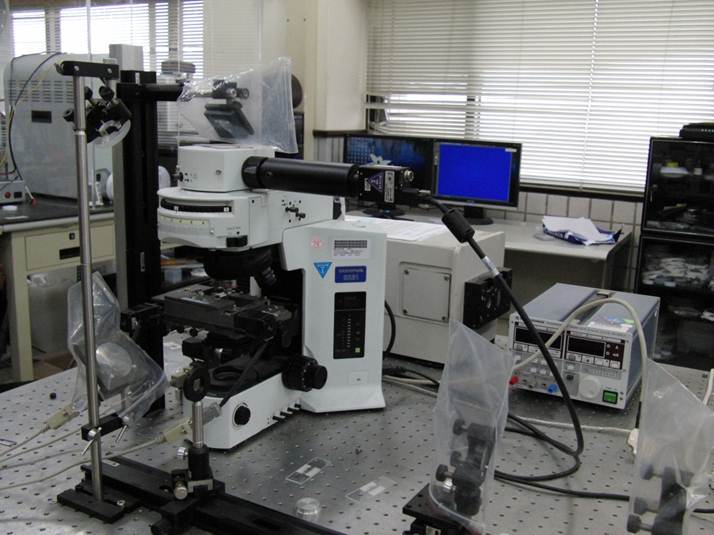
Trapping basics
The idea behind the optical trapping or pushing is based on that the interaction of light with matter. When light propagates through a matter, it transfers momentum to the matter and results in an axial force on it by momentum conservation. The probability distribution of the particle displacement in optical trap in a certain time interval shows Gaussian distribution, which is originated from the property of harmonic potential of the imposed electric field by focused laser.
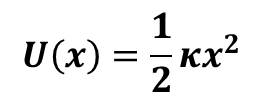

To exert a trapping force homogeneously and stably on a particle in biological system it needs the following things: (1) Laser: a light source with significant intensity, coherence in both space and time and Gaussian profile in particular. (2) High numerical aperture objective: according to the momentum conservation, as the incident light passes through a matter, the reflected light behind it may change the propagation direction compared to the original path. The axial force will be increased when the incident angle between light and matter surface is increased. Thus, the high NA objective which provides an intense light gradient near the focal region and large incident angle can achieve stable three dimensional trapping of dielectric objects and play a key role for forming an optical tweezers.
Force calibration and determination
There are several ways to determinate the force on particle (or other object) exerted by optical tweezers. The major measurement that can be carried out for optical tweezers is the particle displacement and force (in the order of pN) measurement. From above measurements, the spring constant determined by the imposed optical potential and the trapping force acting on the particle can be precisely extracted. One of these approaches adopted by our group to extract the spring constant κ form the system is the mean square displacement (MSD) method. MSD is a standard analytical method for the self-correlation function for a particle under random agitation. For a particle in optical trap one can expect that the MSD will be saturated when the measuring time is long enough due to the optical confinement. Therefore, the maximum displacement of particle in optical trap can be extracted from the value of plateau as the following graph.
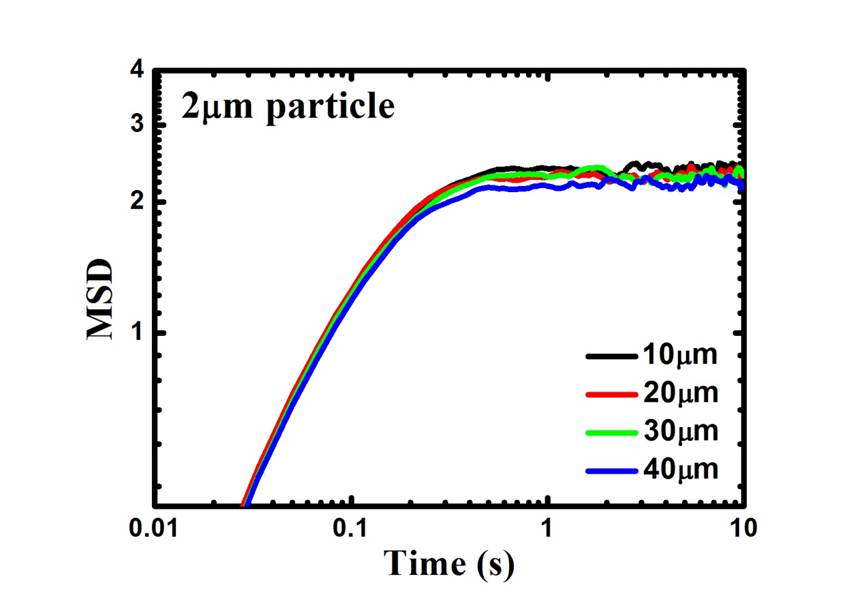
According to energy conservation the thermal energy must be equal to the potential energy when none of external force acts on particle but only thermal fluctuation.
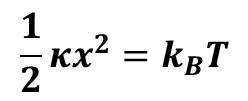
Then one can simply get the spring constant from the equation above. The other approach to determinate the trapping force is by measuring the escaping force of moving particle during trapping. From fluid dynamics, the fluid in stokes’ flow around a moving particle with velocity v will give persistently a drag force opposite to the moving direction until the particle stops. The relation between particle velocity with sphere shape and drag force is given by
η and a are the fluid viscosity and particle radius respectively. Therefore, one can quantitatively determine the trapping force by means of particle escape trajectory measurement through tuning the moving velocity of the laser focus until particle gets dragged away from the optical potential by viscous force. After those force calibration in optical trap, one can measure the force precisely even down to piconewton scale and manipulate object in the microscopic world.
Experiment setup
The setup of the optical tweezers used in our experiments is schematically depicted below. Basically, the setup is based on an upright bright-field microscope equipped with a He-Ne laser (633nm). The He-Ne laser beam has been expanded by homebuilt beam expander to slightly overfill the back aperture of an oil-immersion objective (Olympus 60x/1.25). To fine-tune tune the trapping strength, a continuous attenuator is employed to fine tune the incident laser power. A XYZ translational stage is used to move a substrate with respect to the objective and the image form objective is received by a CCD.
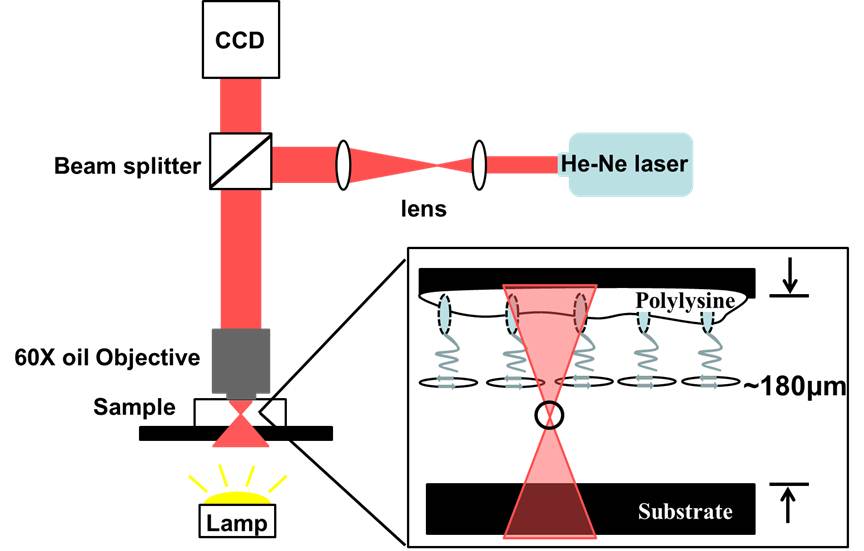
© 中央大學凝態物理實驗室 Condensed Matter Physics Laboratory, National Central University
320 桃園縣中壢市中大路300號 No.300, Jhongda Rd., Jhongli City, Taoyuan County 32001, Taiwan(R.O.C.)
Tel: 886-3-4227151ext.65399 | Email: wywoon@phy.ncu.edu.tw